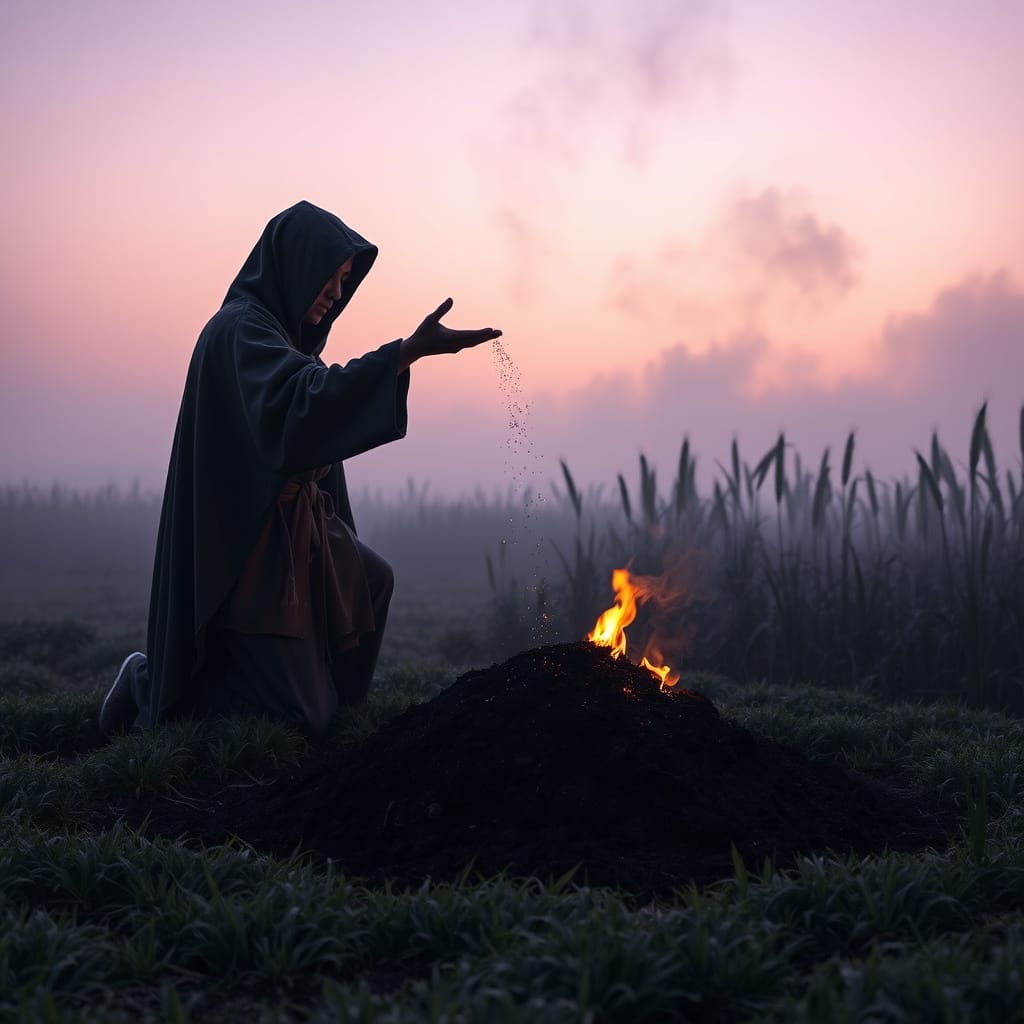Ashbound Vow
History
The Ashbound Vow began over four centuries ago during a period of widespread soil exhaustion known as The Withering Plow. Crops failed across multiple regions due to relentless overuse of farmland. In desperation, a group of spiritual farmers from the northern lowlands sought communion with the land itself. They lit a ceremonial fire to symbolize both purification and renewal and pledged to treat the land with reverence.
Over time, this vow became an institutionalized practice. While its spiritual significance has remained intact, the wording of the vow and tools used have become more standardized. In some regions, local officials or priest-farmers oversee the event, especially after years of heavy yield or visible soil stress.
Execution
The ritual begins at dawn, before the first tool touches the soil. Participants gather at the edge of the field. A symbolic fire is lit in a stone-lined pit, representing the breath of the land and the ancestral spirits that once tilled it.
A handful of soil from the field is brought to the fire. It is sprinkled with clean water (often drawn from a spring or blessed source) and ash from last season’s fire. A short vow is recited aloud by each farmer:
This is followed by the pledging of intent: to rotate crops, to leave part of the land fallow, or to reduce tilling when needed.
The ritual concludes with a shared silence, giving thanks to the soil.
Components and tools
Symbolic fire: Often lit with dried roots and last year’s wheat husks
Ceremonial bowl: Used to mix ash, water, and soil
Fallow-marking stone: In some areas, a small painted stone is left at the corner of the field to indicate land that will rest this season
Blessed water: Drawn from a spring or rain caught in a dedicated vessel
Participants
Lead Farmer: Acts as the spiritual guide of the ritual, often the eldest or most experienced in the community
Farmers and Families: All who will work the field are expected to participate, including children
Observers: In some regions, members of sustainability groups or spiritual orders may attend to witness and record the ritual
Observance
The Ashbound Vow is observed once per year, at the start of planting season, typically during the first week of Verdantia. Some communities align the ritual with the first new moon of the season, believing it enhances the fertility and balance of the land.



Comments